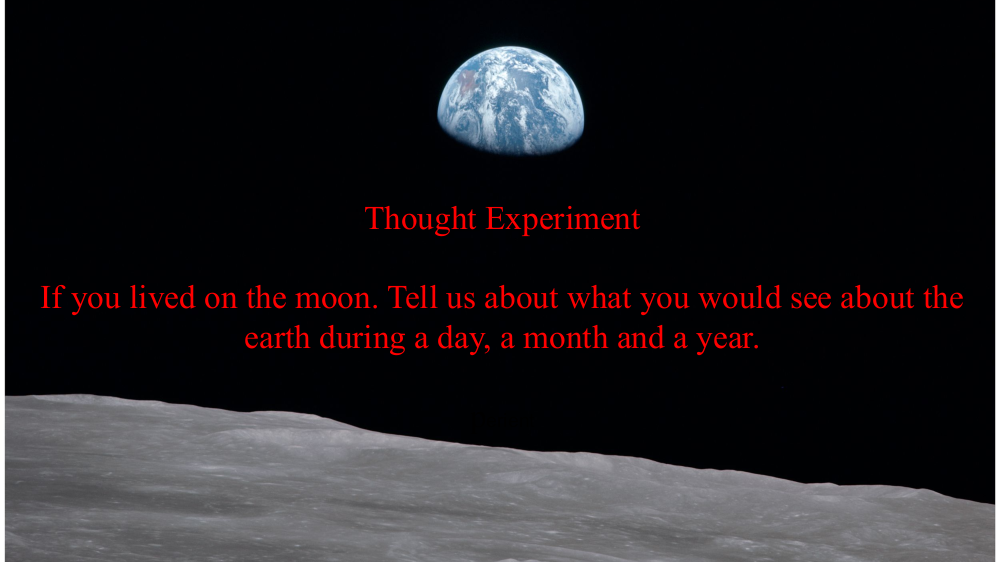Day 1 Introduction session 1 (2 hours)
- Concrete preparation video 1 3 minutes 6 seconds
Phenomena to elicit student ideas and engagement. Metre stick experiment
- Cognitive conflict video 2 5 minutes 49 seconds
Predict explain observe and re explain
- Social Construction
Small group (pair then pair-pair discussions involving demonstrating repeats and sharing observations and explanations) Then teacher led dialogue. Eliciting group responses and using ideas to guide whole class discussion.
Bridging and metacognition video 3 4 minutes 10 seconds
What do you think you learned? How did that happen? What did you find hard? What did you find easy?
What if? type questions leading to next episodes of learning.
Day 1 Session 2 (2 hours)
4 Big questions to guide balance between Knowledge and Enquiry
- What exists?
- How do things happen?
- How do we come to know?
- What should we do with this knowledge?
Phases of moon

Concrete preparation Making clear distinction between observe, infer and explaining the evidence that supports the inference.
Creating a model to explain the observations and inference.
What must exist in the model so we can monitor and evaluate its explanatory power?
Discussion of these two propositions may well be needed to successfully guide model making
Half of the Moon is always illuminated by the Sun but this is always a different half every day.
The same half of the Moon always faces the Earth.
Cognitive conflict will arise within student groups and between when the models are reported back to the whole class. Social construction will also happen during group work and during whole class reporting.
Metacognition will involve monitoring and evaluating the fit of the models to the observations. Also planning additions to the models e.g why do we have a curved boundary between the dark and light.
Bridging to Earth and other solar system objects having phases
Day 1 Session 3 (2 hours)
Analemma 2D to 3D modelling
Concrete preparation
Description of the variables of the photographs.
Again making a clear distinction between observe, infer and explaining the evidence that supports the inference.
Cognitive conflict
Adding analemma to a 2D model to explain the observations and inferences.
Social construction
What must exist in the model so we can monitor and evaluate its explanatory power?
Discussion of the need for strategic direct instruction e.g orbit and tilt of the earth during a year.
Bridging
Extending and generalising to 3D model explaining all places on Earth

Discussion of the necessity for a model to successfully include all observations in a coherent manner. Then the thought experiment as a formative and summative assessment. (Open book assessment of max 20 minutes. Students create A3 sheet of annotated diagrams and explanations which are then scanned. Not needed in teacher workshop) Then class discussion for a lesson and then assessment repeated next lesson without an open book.
Then post assessment Metacognition and Bridging
Planning for Day 2